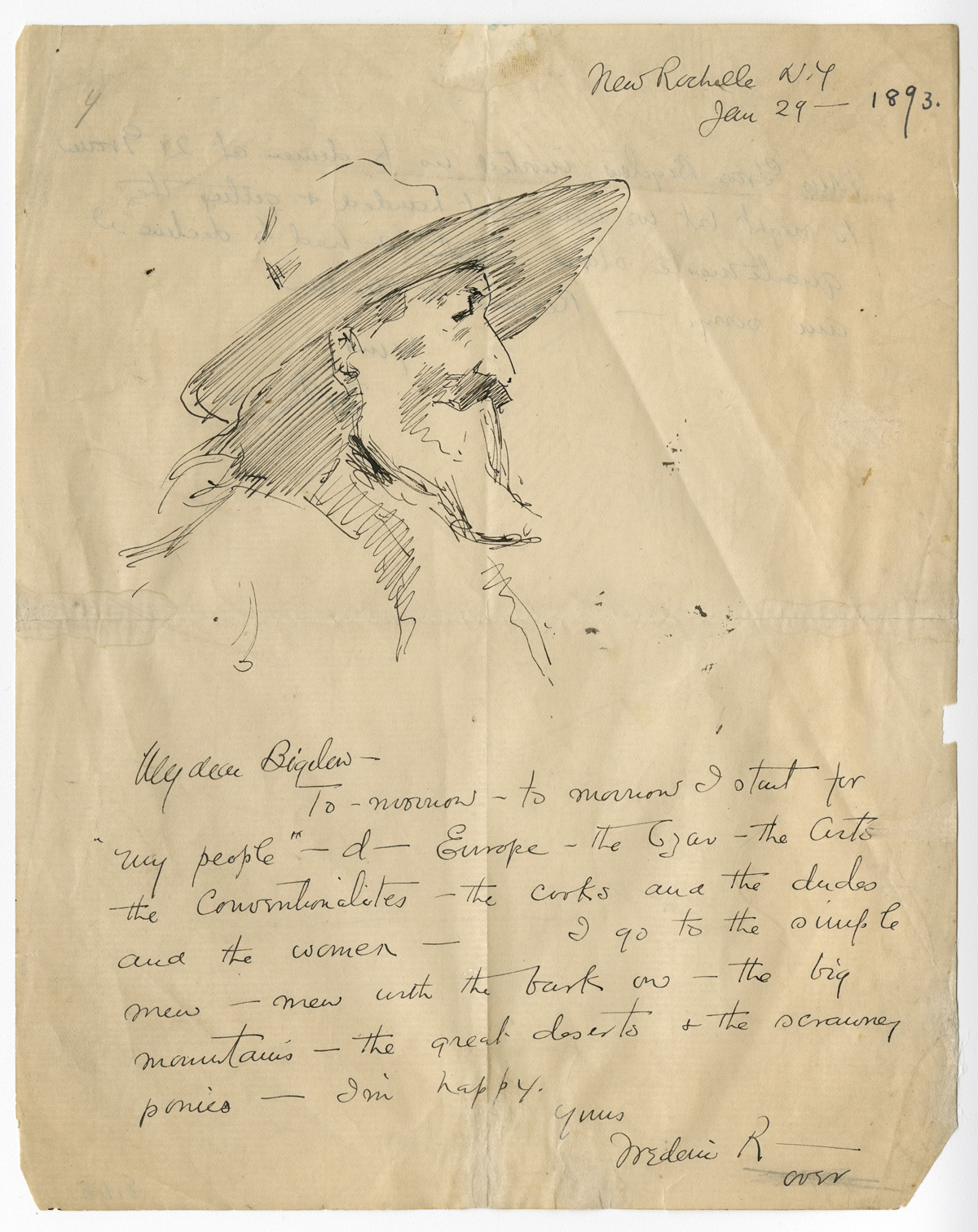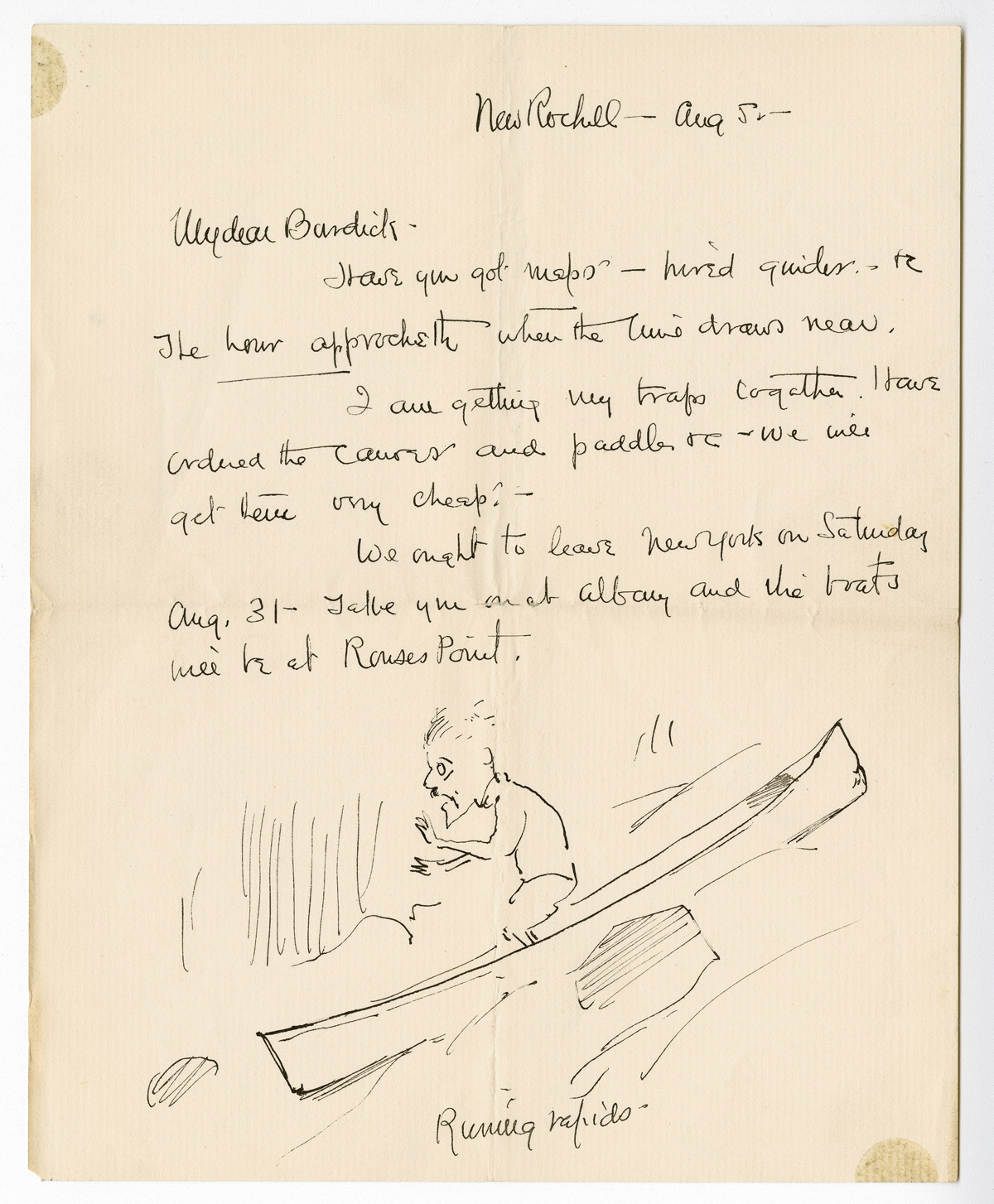The Remington Collection at St. Lawrence University, numbers approximately 400 items. Remington's correspondence constitutes the most important series in the collection.
Collection Overview
Included are letters to Poultney Bigelow, famous as a war correspondent and Remington's closest friend. Remington illustrated many of the articles which Bigelow wrote. A number of the articles Remington illustrated for Harper's Magazine are included in this collection.
There are also letters to John Howard and to Remington's wife, Eva Adele Caten Remington, and various others.
There is an extensive collection of magazines in which articles written and/or illustrated by Remington were first published. There are issues of Harper's New Monthly Magazine, dating from 1889-1902 and of Harper's Weekly Magazine, dating from 1886-1895, and articles excerpted from Harper's Magazine. In addition to these are issues of Collier's The National Weekly, which regularly feature oversize Remington illustrations.
Frederic Remington was born in Canton, New York, on October 4, 1861, the son of Seth and Clara Sackrider. He was educated at The Vermont Episcopal Institute and Yale University, but after the death of his father, Remington left school and went West at age 19. There he worked as a cowboy and a scout, ran a sheep and mule ranch, made money and lost it, and formed the aesthetic vision that was to guide the rest of his life. When he returned to the East he determined upon a career as an artist and illustrator. In 1884 Remington married Eva Caten and they settled in New York, but as commissions and assignments came in, Remington spent considerable time traveling the American west and abroad working on his illustrations and paintings. His favorite subjects were men near nature and struggling in extreme circumstances. His work with both the human figure and the horse was famous for its strong sense of action.
In later years Remington painted more and illustrated less. In 1895, he turned to sculpture and produced 22 works during the next fourteen years. His sculptures were illustrations in bronze with an accent on character and action. In addition to his works of art, Remington also wrote vigorous journalistic prose and published books and articles so that he might use his drawings and paintings to illustrate them. His illustrations and stories appeared in the popular magazines of the day such as Century, Collier's Weekly, Cosmopolitan, The Craftsman, Harper's Monthly, Harper's Weekly, Harper's Round Table, McClure's, and Scribner's Magazine. Best remembered for his documentary art, he was one of the most prolific men in his field. His works cover the whole era of the "Old West", both historically and geographically.

